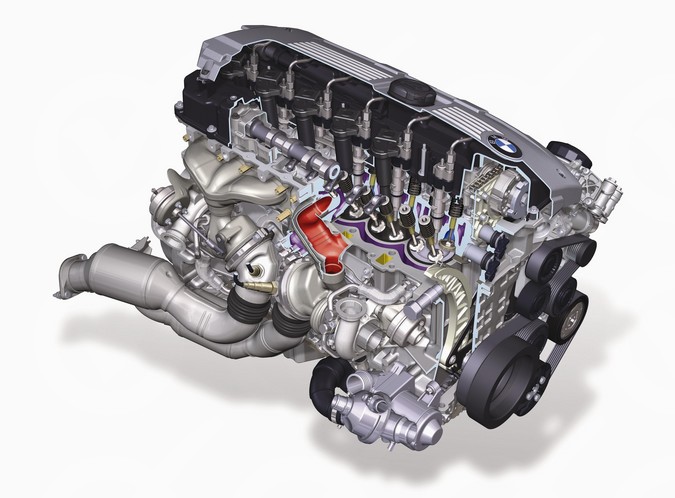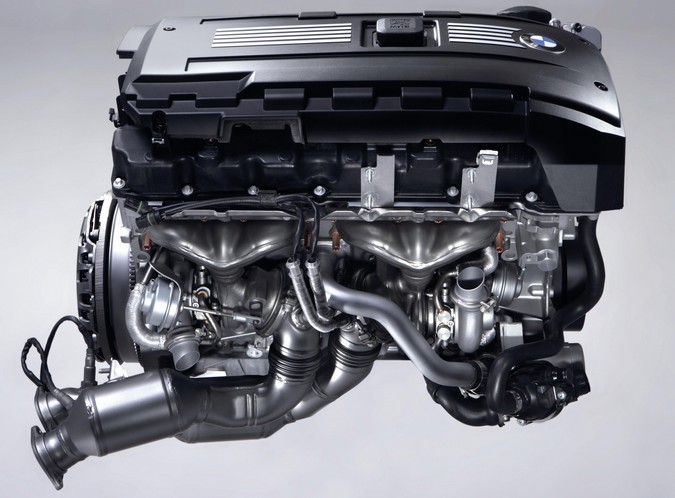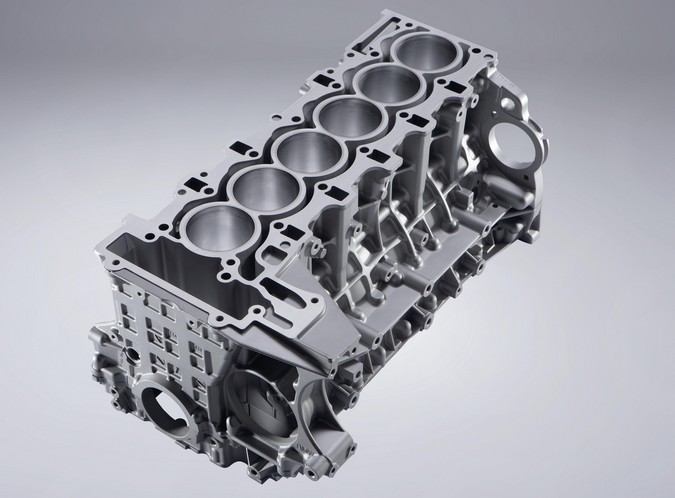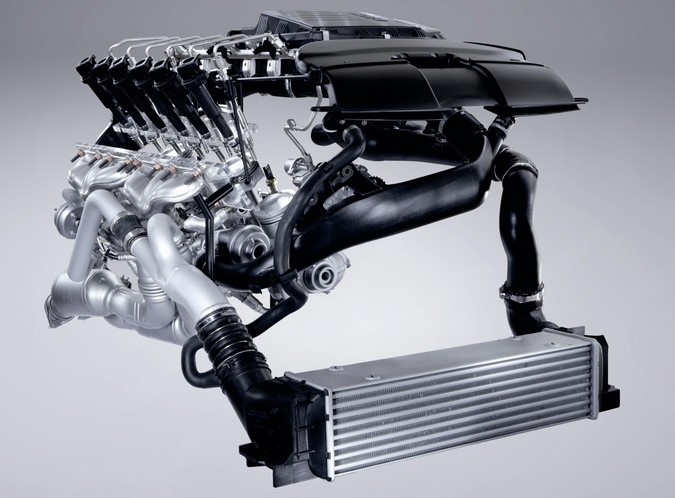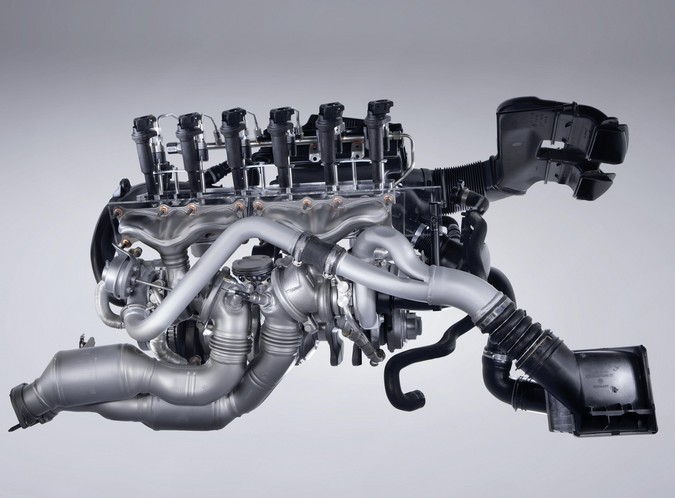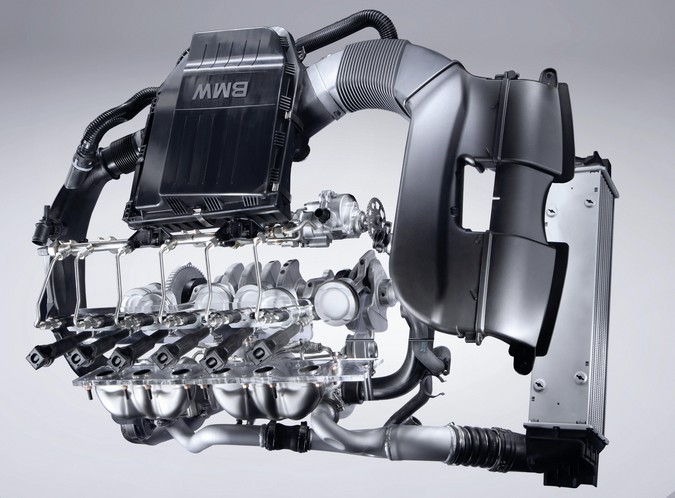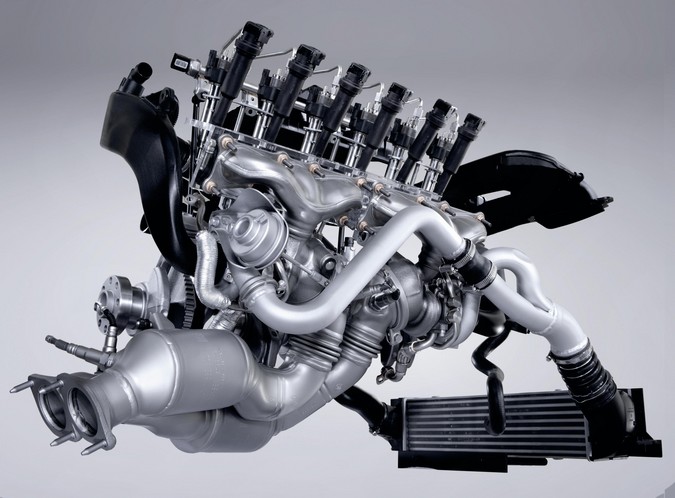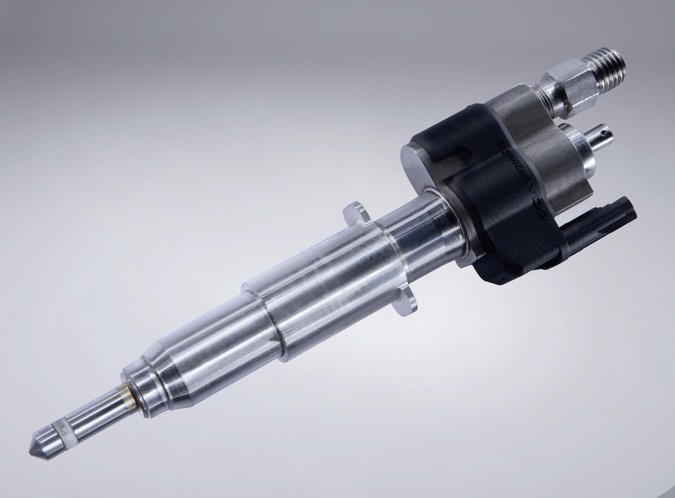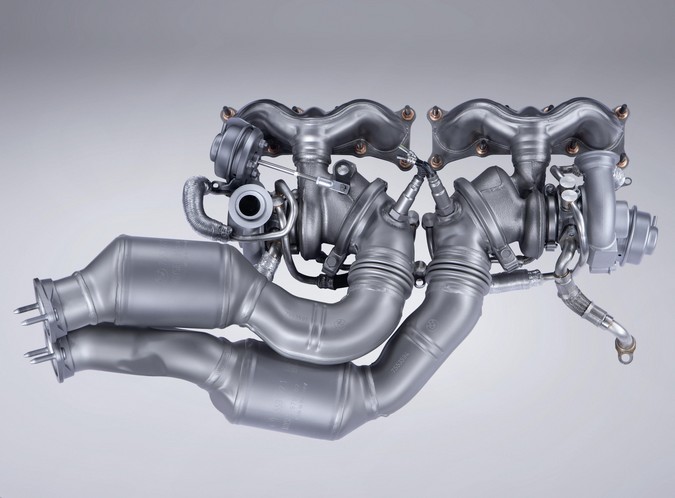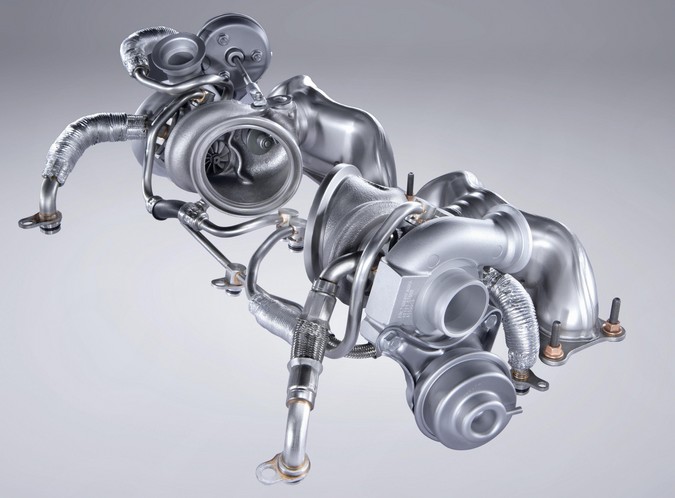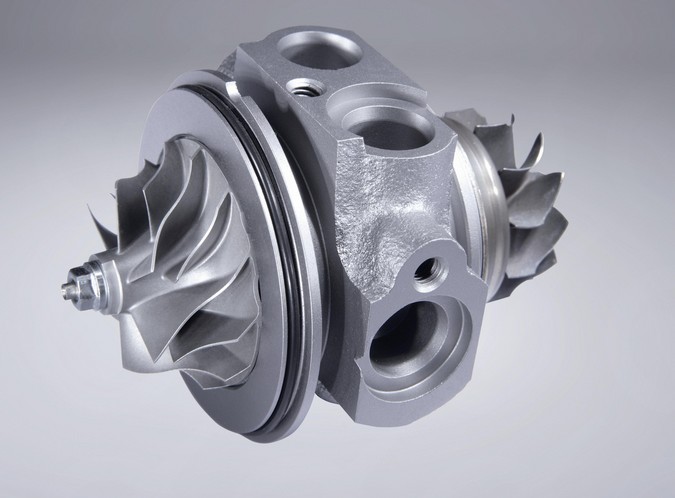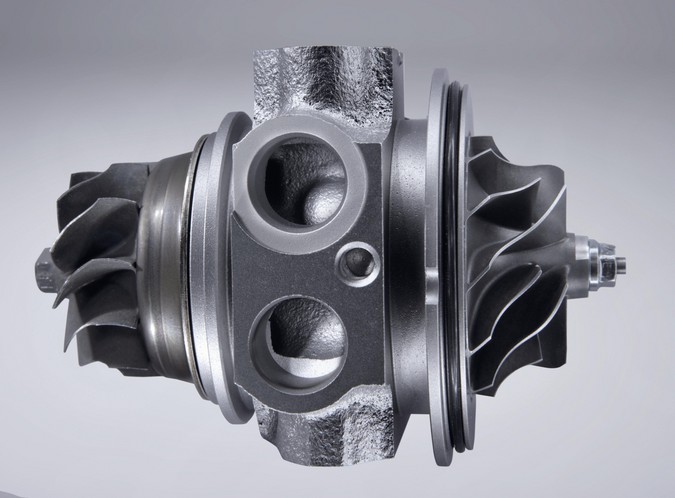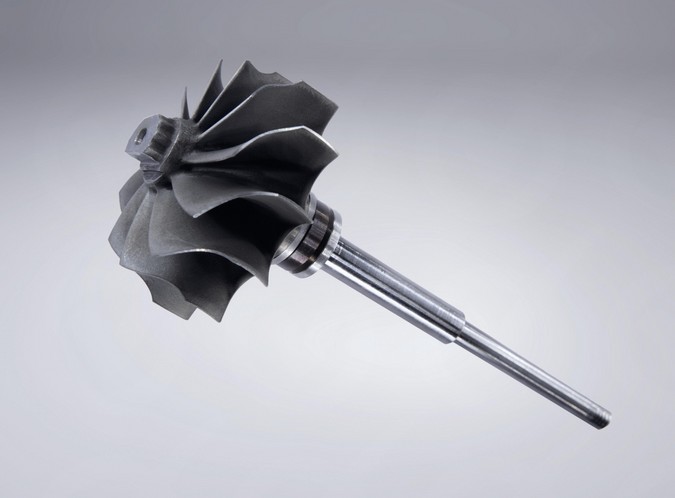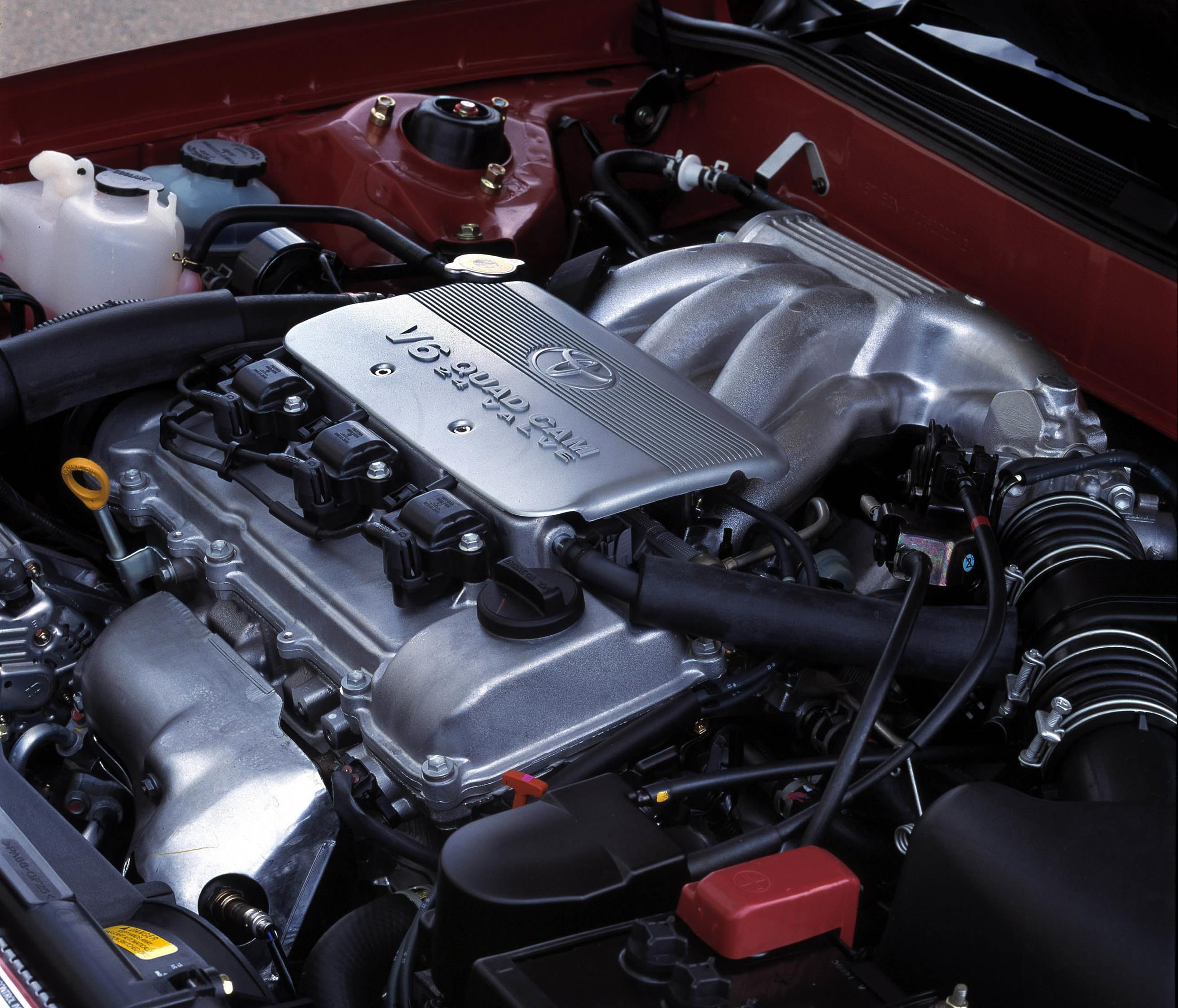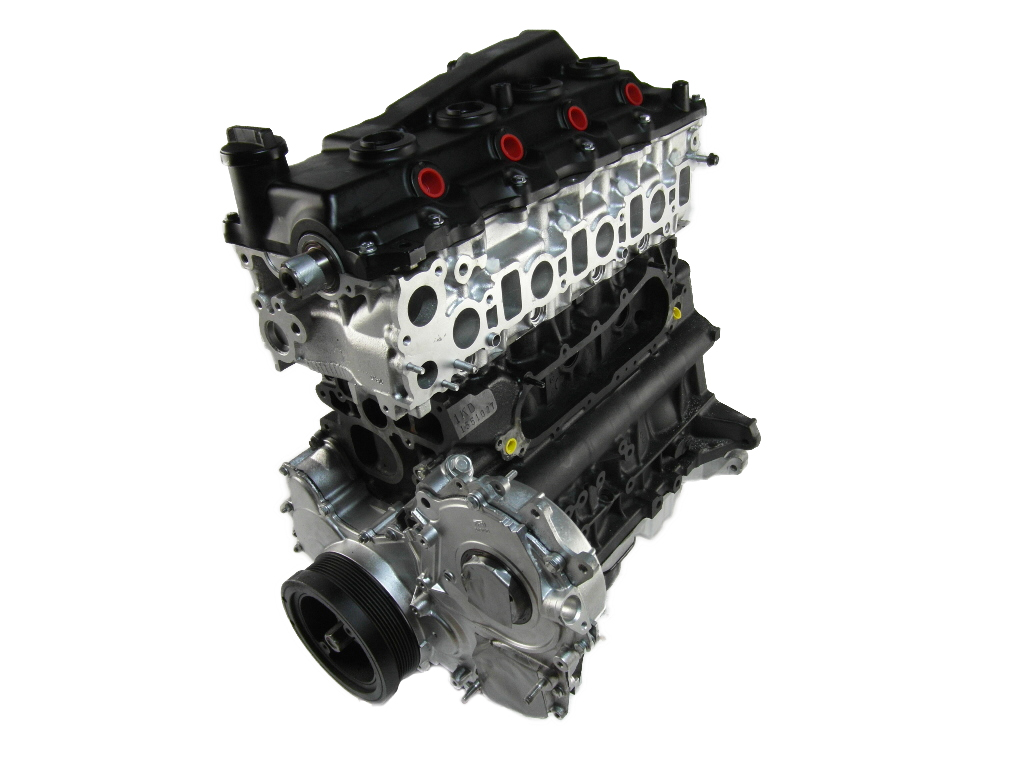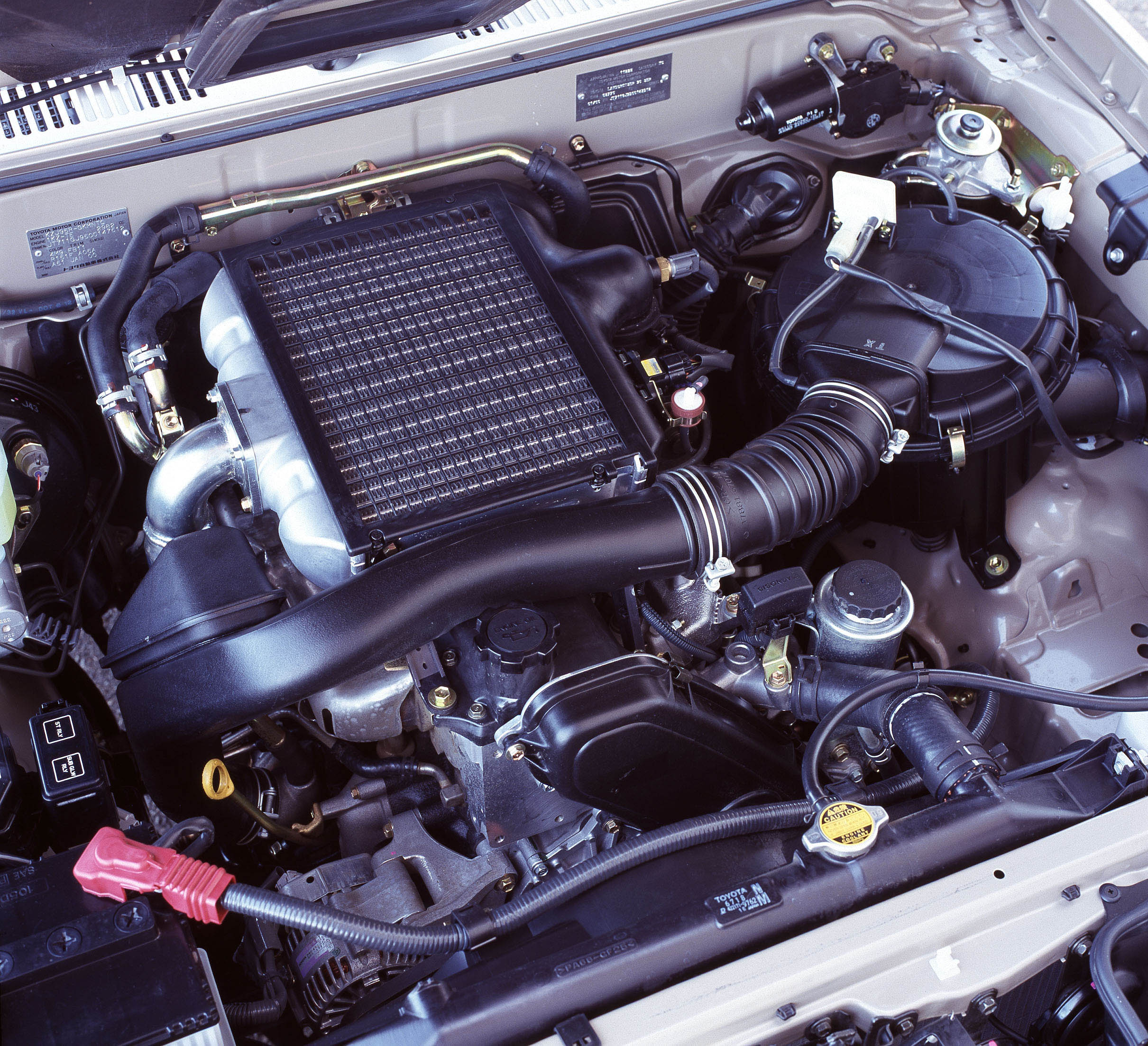From 2007 to 2012, the N54 engine won six consecutive ‘International Engine of the Year’ awards.
Block
The cylinder block for the N54 engine was derived from the previous generation M54B30 engine since the newer N52 block was considered unsuitable for turbocharging. As such, the N54 engine had an open deck design with a two-piece aluminium crankcase and bedplate. Due to the high torque outputs of the N54 engine, the crankcase was manufactured from one single material (unlike the N52 engine) in a pressure die-casting process from AL 226. Because of its turbocharging, the N54 engine had a pressure-limiting crankcase breather so that oil would not be drawn in through the breather into the intake manifold as a result of high vacuum pressures.
The cylinder liners for the N54 engine were made of grey cast iron. Furthermore, the N54 engine had a forged crankshaft and maximum engine speed of 7000 rpm.
Cylinder head and valvetrain
The N54’s aluminium cylinder head housed double overhead camshafts (DOHC), variable intake and exhaust camshaft timing (dual VANOS) and four valves per cylinder. Unlike the N55 engine which replaced it, the N54 engine did not have variable valve lift (BMW’s ‘Valvetronic’).
Turbochargers
The N54 engine had two low-inertia, Mitsubishi TD03 (TD03L 4W-10TK3-4.9) turbochargers with each turbocharger providing boost pressure for three cylinders (i.e. operating in parallel). Due to the high temperatures, the turbochargers were connected with the engine-oil system and integrated in the engine-coolant circuit.
For the N54B30 engine, peak boost pressure is understood to be 0.6 bar (8.7 psi) with an overboost function capable of increasing boost to 0.93 bar (13.45 psi) in certain situations. For the N65B30TO engine, peak boost pressure is understood to be 0.8 bar (11.6 psi), with the overboost function increasing boost to 1.0 bar (14.5 psi).
To control boost pressure, the engine management system (MSD80) used wastegate valves that were operated by vacuum-pressure actuators. When the desired level of boost pressure was attained, the wastegate valves would open and direct part of the exhaust-gas flow past the turbines. Furthermore, blow-off valves could reduce unwanted peaks in boost pressure such as when the throttle valve closed quickly.
Injection and combustion
The N54 engine had direct injection which enabled it to achieve a higher compression ratio (10.2:1) and lower exhaust gas temperatures at full load than conventional port injection engines. With its piezo injectors, petrol was injected at pressures ranging from 50 to 200 bar for homogenous or stratified-charge combustion.
| Engine | Capacity | Peak power | Peak torque | Models | Years |
|---|---|---|---|---|---|
| N54B30 | 2979 cc (84.0 x 89.6) |
225kW at 5800rpm | 400Nm at 1300-5000rpm | E90 335i, E91 335i, E92 335i, E93 335i |
2006-10 |
| E60 535i | 2008-10 | ||||
| E82 135i, E88 135i |
2008-10 | ||||
| E71 X6 xDrive35i | 2009-10 | ||||
| E89 Z4 sDrive35i | 2009-on | ||||
| 240kW at 5800rpm | 450Nm at 1500-4500rpm | F01 740i | 2009-12 | ||
| E71 X6 xDrive35i with Performance kit | 2009-10 | ||||
| E82 135i and E88 135i with Performance kit | 2009-10 | ||||
| N54B30TO | 2979 cc (84.0 x 89.6) |
250kW at 5900rpm | 450Nm at 1500-4500rpm (500Nm with o’boost) |
E89 Z4 sDrive35is | 2010-on |
| E82 1 Series M Coupe | 2011-12 |
N54 problems
1. N54 High Pressure Fuel Pump (HPFP) failure
The High Pressure Fuel Pump (HPFP) could become defective, causing long engine starting times, the ‘service engine soon’ lamp may illuminate in the instrument cluster and the vehicle may enter ‘limp home’ mode. For Australia, BMW initiated a ‘technical campaign’ to replace the fuel pumps of vehicles within the affected VIN range. In the USA, however, BMW issued a recall and extended its fuel pump warranty to 10 years or 120,000 miles (193,000 kms) for vehicles that were manufactured from 2007 to 2010.
2. N54 wastegate rattling
The wastegate rod has some slack at the joint/bearing where it comes off the actuator and meets the wastegate arm. As a result, rattling noises may come from the wastegate actuator arms and the wastegate itself. If the wastegate was rattling, the valve seats may wear and prevent the wastegate from fully closing – this could cause low boost pressure, the on-board diagnostics to issue a 30FF fault code (for low boost pressure) and the vehicle to enter ‘limp home’ mode. For vehicles under warranty with damaged turbochargers, BMW would replace the turbochargers and added either added a part to the joint or replaced the joint to remove the slack/play. As a result of a class action in the USA, BMW North America extended its warranty of the turbocharger to eight years or 82,000 miles (132,000 kms) for any failure caused by a defect in the turbocharger’s wastegate. For vehicles that are not under warranty, an aftermarket solution involves:
- fitting a titanium bush through the turbo body for the wastegate arm;
- remanufacturing the actuator rod to the wastegate arm bush; and,
- remanufacturing the wastegate valve.
